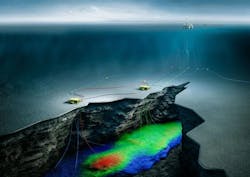Offshore staff
LONDON – Neptune Energy plans to step up activities this year on its Fenja and Seagull field developments, the company revealed in its latest results statement.
Fenja, a tieback to Equinor’s Njord A platform in the Norwegian Sea, is currently on track for start-up in June 2022, pending progress on the Njord Future redevelopment project.
At Seagull in the UK central North Sea, the export pipeline to bp’s host ETAP platform was laid last December and topsides modifications are under way.
Drilling on the four wells started early in 2021 and the campaign should last 18 months, with first oil from Seagull expected in early 2023.
With new lower cost production coming onstream, Neptune sees its overall opex falling below $9/boe in 2023.
The company’s New Energy team has started a feasibility study concerning a large-scale offshore carbon capture and storage project in the Dutch North Sea, with the potential to store 120-150 MM metric tons (132-165 MM tons) of CO2 for industrial customers.
This could involve injecting 5-8 MM metric tons (5.5-8.8 MM tons) of CO2 annually into depleted gas fields around the Neptune-operated L10-A, L10-B and L10-E areas, building on the company’s experience with injecting CO2 in the K12 fields.
In addition, the offshore green hydrogen pilot at the PosHYdon project in the Dutch sector is due to enter the design phase this year.
Neptune is also assessing the feasibility and viability of electrification to de-carbonize its production offshore Norway and the UK. Following approval last year for electrification of the Equinor-operated Gudrun platform in the North Sea, the scheme should start up in late 2022.
03/11/2021
